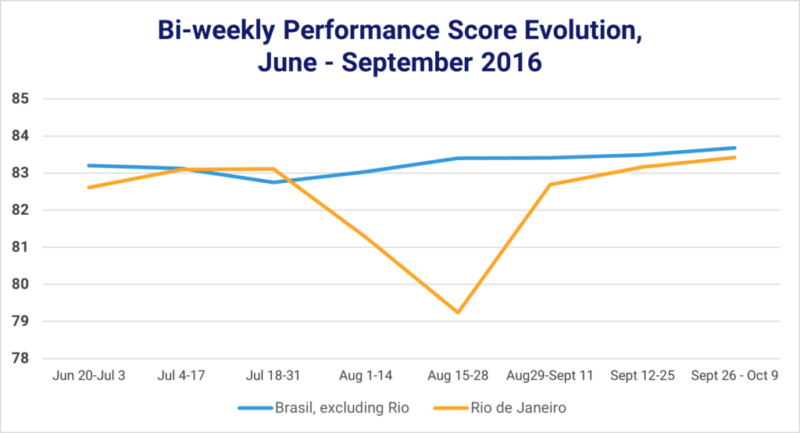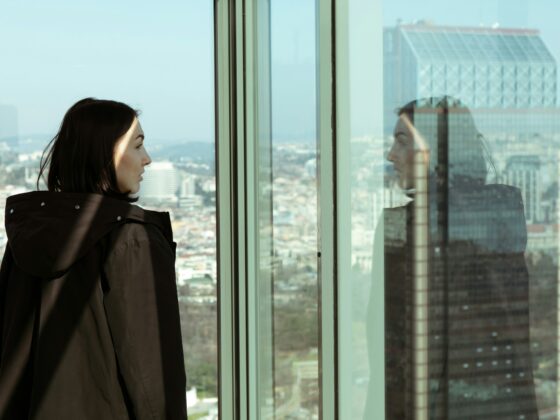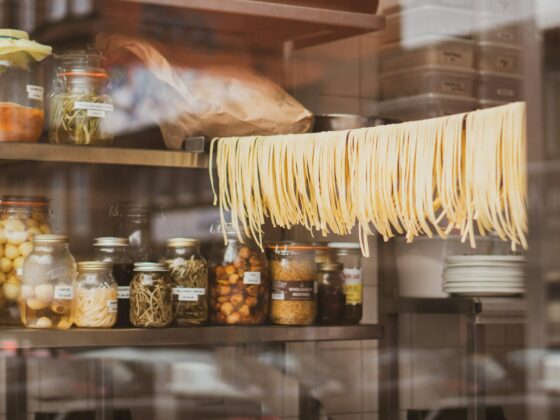Meetings and events are in the midst of a renaissance heading into 2025, with numerous contributing factors as to why. Top of the list for the corporate and group segments is the need to bring people together in a world that has embraced hybrid or fully remote working arrangements.
As we’ve all learned from the pandemic, no form of video or voice call can replace the rapport formed only by in-person conversation. Put another way, a remote employee who does not gather with their teammates or other business colleagues feels no personal connection to the company, reducing morale and retention. Thus, executives now view conferences and MICE travel as an incentive tool for company loyalty as well as a means of fostering collaborative, productive work.
The difference now is that the demand has shifted in favor of host hotels that can offer highly dynamic and varied venue spaces along with a full list of add-ons such as onsite entertainment, exciting offsites and, of course, inspirational F&B. To state it bluntly, group and corporate travel planners no longer want their multi-day meetings to be in the ‘same old ballroom’ with ‘forgettable banqueting service’. Instead, many companies are more than willing to pay a premium for highly experiential events that leave every attendee thinking only, Wow, I can’t wait until next year.
And those are the exact words we would use to describe the recent site visit (conducted by Adam in this case) to the Fairmont Rio de Janeiro Copacabana (as well as to its sister property, MGallery Santa Teresa). From the extensive tour of all meeting facilities, culinary, spa and the overnight experience, it’s abundantly clear why this luxury property is the top choice for domestic as well as international corporate events and social groups held in this iconic Brazilian city, – and possibly also the top choice for the entire country.
Describing what makes this hotel special for the corporate, group and blended segments offers a shining example for the experiential meeting renaissance for the latter half of the 2020s, for which we had the expert guidance from the hotel’s Director of Sales and Marketing, Patricia Costa, to show us all the details that together make all the difference.
What Makes the Fairmont Rio de Janeiro Copacabana Special
At 375 rooms and suites, and with over 12 meeting rooms totaling over 27,000 square feet, the property has the capacity to skillfully host groups of all sizes as well as handle regular business clients – for which oil, gas and clean energy are key corporate demand drivers in this topographically stunning port city.
What’s most striking at first glance, though, is the hotel’s prime location, with its conference center, rooms, restaurants, pool (one of two) and Fairmont Gold lounge all facing onto the expanse of the famed Copacabana Beach and Sugarloaf Mountain just behind it. No picture can do this panorama justice, and it alone is worth the price of admission to an event held on premises.
Technically situated in the portmanteau middle ground of ‘Copanema’ (in-between the neighborhoods of Copacabana and Ipanema just to the west), the Fairmont Rio de Janeiro Copacabana is the literal epicenter of the city’s South Zone, bestowing the property with a series of other advantages besides its sweeping views of the beach and Southern Atlantic.
For one, the hotel boasts Tropik, its own beach club right across the street which offers full F&B service that can be conveniently billed to the room, setups for fun beach sports like volleyball and futevolei (footvolley) as well as rentals for watersports – also a common pastime amongst cariocas, the colloquialism for Rio’s denizens – such as paddleboards, sailing or even outrigger canoes. Also across the street is Fort Copacabana, an active military base with a retired First World War-era gargantuan turret and underground bunker that can be easily toured, and for which the hotel has a partnership to host private events on the grounds of this outcropped headland.
While discussing private offsite events, the one that Costa mentioned as the real jaw-dropper was the group sunrise breakfasts that the hotel can arrange at Christ the Redeemer (Cristo Redentor in native Portuguese). Any time of day or year, a normal visit here will see you choking for space amidst throngs of selfie-crazed tourists, leaving you with a bitter tinge as you’re unable to fully appreciate the heavenly views from this holy mountaintop site. To get in before public opening hours, hotel guests have to leave in the wee hours of the early morning while the catering team often has to start prep work at midnight. Rest assured, seeing the sun crest over the peaks below right at dawn while feeling a sense of peaceful bliss from having room to breathe is not just a once-in-a-lifetime but a once-in-a-generation experience.
Returning back to sea level, the property’s layout next allows for a particularly exciting setup for its evening music programming. The infinity pool overlooking the beach on the sixth floor happens to be ringed by the signature restaurant, Marine Restô, on its left, the main lobby in the center, Copa Spirit Bar on its right and a dozen or so floors of south-facing guestrooms radiating upwards on all three sides.
This pool is shallow enough to allow for a band’s equipment to be assembled and placed right in its middle, while most of the pool furniture is modular to be arranged for lounge-style seating along its perimeter, thus allowing every restaurant diner, bargoer, local or tourist to listen, while hotel guests can watch right from their guestroom balconies above. Costa noted that this unique setup is a popular request for evening group events, while a notable milestone for their regular programming was having Andrea Bocelli perform in this manner back in May of this year. Imagine yourself hearing the sonorous melody of Con Te Partirò
right from your room’s balcony – truly once in a lifetime!
Blended Travel, Length of Stay and Repeat Visits
We attract a healthy mix of Brasileiros, with the domestic market being our biggest audience, in addition to a sizable contribution from Americans and Europeans,
stated Costa. The unique qualities of our design, amenities and programming ensure that first-timers to the city are given the best introduction possible to the city, while also allowing returning guests to rediscover Rio in a new way, often a way that many cariocas don’t even know about! This is what makes our property timeless in that there’s always a reason to come back.
Especially for non-leisure segments, what we discussed was how hotels like the Fairmont Rio de Janeiro Copacabana are excelling at capturing the fast-growing blended travel market. More than just bleisure which is more narrowcast on business-primary guests adding a ‘shoulder night’ or two of leisure to help boost a property’s length of stay (LOS), the terminology of blended travel more broadly encompasses other post-pandemic travel modalities such as ‘plus one travel’ whereby a couple travels together and, while one attends a conference or takes meetings downstairs, the other works from the hotel or uses the spa. Another offshoot from this banner term harks back to remote work where Brazil offers a tropical destination to Americans that’s affordable, full of culture and on the same time zone.
The key to capturing blended travel demand is through strong ‘amenitization’ and a variety of onsite programming. For instance, besides all the abovementioned features, this hotel boasts one of the largest fitness facilities in the South Zone, kept pristine clean and with well-maintained, functional equipment. Such an amenity (along with the spa) is becoming a dealbreaker for ‘wellness-secondary travelers’ who are visiting a destination for a non-wellness purpose but still want to maintain their healthy habits while abroad.
Overall, while the acceptance of work-from-anywhere (WFA), remote or semi-remote employment is a foremost enabler of blended travel, another key factor circles right back to the drivers behind experiential meetings. Oftentimes, for both domestic and international travelers, you visit a hotel for a conference and only really experience the venue spaces or the nearby convention center, and never truly ‘feel’ the destination. Hence, the future favors those properties that not only offer excellent onsite amenities but also allow guests to immerse themselves in the local land in a manner that’s convenient and frictionless for the ever-busy business guest or traveling family.
Referenced earlier, the Fairmont Gold program deserves further explanation here. Providing a separate check-in experience, superior room types on their own dedicated floor and its own private club lounge on the fourth floor with curated-yet-casual dining options, this is yet one more way to elevate any guest’s stay through the creation of a ‘hotel within a hotel’. For example, one traveler may visit for the first time and stay in an ocean view king, but then decide to come back and opt for a Fairmont Gold suite to have more onsite flexibility as they take in the surrounding destination.
Besides all the experiences that the Fairmont Rio de Janeiro Copacabana offers, one other strategy taken to enhance its blended travel performance is through the clustering of management with its sister property, the 43-key MGallery Santa Teresa (and also with the Sofitel on Ipanema Beach which is set to reopen later next year after a full-scale refresh). By working closely together, both properties can offer packages and incentives that allow guests to stay at both properties for two distinct flavors of Rio with completely different onsite experiences.
The Culinary Presentation in Focus
It should be obvious to everyone that F&B excellence is critical for attracting guests and driving LOS. Food is such a central part of our lives that travelers of all segments want to be dazzled by the visual presentation and the variety of cuisine options available on premises. Guests also want to eat like locals, experiencing the best expression of a region and sampling locally produced goods.
There’s room for every hotel to be creative and exceptional in this regard, but the Fairmont Rio de Janeiro Copacabana nevertheless offers many points of inspiration. To start, Brazil may be known globally as a leading agricultural producer of numerous fruits and vegetables, but the predominance of cattle ranching, açaí or cashew nuts can often overshadow the nation’s flourishing wine and olive oil industries.
Yes, we can wholeheartedly say that the dessert menu proudly showcases the best of Brazilian fruits, from cupuaçu sorbet and papaya mousse to white chocolate confectionaries disguised as a cashew fruit (and presented on a bowl of actual cashew fruit). But one of the missions for Marine Restô has been to bring Brazilian wines and olive oil to the forefront, with a menu emphasizing domestic vintages and having their house-branded ‘frutado’ olive oil bottles available at every table via a partnership with producers from the southmost state of Rio Grande do Sul. Similarly, the property works with apiaries within the state of Rio de Janeiro so that patrons can always sample some local honey. Ultimately, even if the guest is just sitting down for an afterwork chopp – Brazilian for a small pint of lager – there’s nonetheless a passion here to ensure that every dish and beverage can hold its own against the grand vistas of Copacabana Beach.
Sustainability and Stewardship Now Essential to Luxury
Another obvious trend for hoteliers is that group planners and leisure transients are becoming exceedingly cognizant of their carbon footprints, and they are requiring hotels to meet sustainability standards in order to secure the booking. What we discussed with the team at the Fairmont Rio de Janeiro Copacabana were not only the efforts taken to manage energy emissions and waste but also those enacted towards something greater, for which the encapsulating term is ‘stewardship’.
For a basic definition, stewardship means supporting the community at large in a direction that improves the livelihoods of all involved. Sitting at the crossroads of Copacabana and Ipanema, this hotel has always had a role to play in progressing both neighborhoods, but being a steward is like being a gardener, mandating constant updates and new forms of patronage.
This starts with the materials used and what’s on display. To support the local economy and to tell a genuine Brazilian story, all woods used for furniture and finishings were sourced domestically while the marble comes from the state of Paraná. The sixth floor and all public corridors are adorned with paintings and sculptures from Brasileiros while the two gift boutiques on the first floor respectively feature local crafts and the high-end Reserva clothing line.
Even something as innocuous as providing local olive oil at the restaurant is a form of stewardship and sustainability. This action is reducing food miles by alleviating the need for transcontinental imports (most coming from Spain and Portugal), but it’s also helping raise awareness about the availability of Brazilian olive oil and creating more demand to further propel the nascent domestic olive industry to reach economies of scale. Lastly, it’s been shown that lengthy transport can reduce the antioxidant and polyphenol capacity of olive oils, so consuming ones made closer to home can actually help to preserve this food’s generous health benefits.
Up in the Hills at MGallery Santa Teresa
Our carioca refuge make you think less, feel more and enjoy every single moment,
remarked Sophie Barbara, General Manager of the MGallery Santa Teresa during the jaunt away from the beach and up to the steep hillside neighborhood of Santa Teresa that overlooks Rio’s Centro (downtown) skyline.
A refuge or urban sanctuary is indeed the most appropriate way to describe this smaller, intimate property that nevertheless hosts its fair share of exquisitely experiential meetings and events. A converted coffee farm – fazenda in Portuguese – dating back to 1850, the experience here is a world apart from what’s offered only 30 minutes away in the South Zone, and this boutique property deserves mention as one prominent way that Accor (the parent company for both hotels) has added value to the destination by offering this alternative that’s a night-and-day difference yet still firmly quiet luxury.
Each guestroom or suite here offers historic charm while the Michelin-recommended signature restaurant, Térèze, is the perfect blend of Brazilian and French cuisine. Whether for a blended travel extension, small weddings held onsite or an independent leisure stay, having this enchanting property available for visitors to Rio is yet one more way to enthrall guests or extend LOS as part of a group segment strategy.
Looking out on the MGallery Santa Teresa’s tranquil outdoor pool and bar area with panoramas of the city below, it’s yet another moment where you think to yourself, Wow, I can’t wait until next time.
And to close, all that one can truly say after these two hotel visits is Obrigado,
– thank you in Portuguese – or in the local carioca dialect, Valeu!














